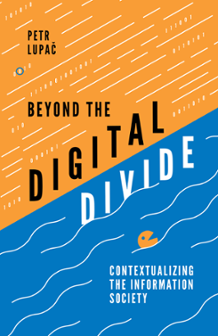
Index
Beyond the Digital Divide: Contextualizing the Information Society
ISBN: 978-1-78756-548-7, eISBN: 978-1-78756-547-0
Publication date: 24 September 2018
Citation
Lupač, P. (2018), "Index", Beyond the Digital Divide: Contextualizing the Information Society, Emerald Publishing Limited, Leeds, pp. 207-211. https://doi.org/10.1108/978-1-78756-547-020181001
Publisher
:Emerald Publishing Limited
Copyright © 2018, Petr Lupač. Published under exclusive licence.
INDEX
Note: Page numbers followed by “n” with numbers indicate notes.
- Prelims
- Chapter 1 Introduction
- Chapter 2 Searching for the Core of the Information Society Theory: Developments, Versions, Arguments
- Chapter 3 Manuel Castells: Towards the Digital Divide of the Information Age
- Chapter 4 Digital Divide Research
- Chapter 5 Tenuous Assumptions in Digital Divide Research
- Chapter 6 Understanding Indispensability: Contexts, Networks and Discourses
- Chapter 7 Conclusion: Towards a New Theory of Information Society
- Bibliography
- Index